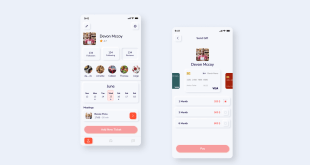In recent years, the digital landscape has witnessed a remarkable transformation in user interactions with mobile devices. The advent of Voice User Interfaces (VUI) has revolutionized mobile design, making it more accessible and user-friendly for a diverse audience. This blog delves into the significant impact of VUI on mobile user experience and how it has become a game-changer for accessibility.
Understanding Voice User Interfaces (VUI)
Voice User Interfaces (VUI) are a type of user interface that allows users to interact with mobile devices and applications through voice commands and natural language. VUI leverages advanced speech recognition and natural language processing technologies, enabling seamless interactions between users and their mobile devices. Instead of relying solely on touch or keyboard inputs, users can now engage with their devices through spoken words, making interactions more intuitive and efficient.
The Evolution of VUI in Mobile Design
The concept of VUI dates back to the 1950s, but it wasn’t until the last decade that significant advancements in voice recognition technology paved the way for its widespread adoption. Virtual assistants like Apple’s Siri, Amazon’s Alexa, and Google Assistant have played a pivotal role in popularizing VUI and familiarizing users with its capabilities. As these assistants became more sophisticated, mobile designers recognized the potential of integrating VUI into their applications to enhance accessibility.
Enhancing Accessibility for All Users
One of the most significant advantages of VUI in mobile design is its potential to improve accessibility for users with disabilities. People with visual impairments or motor disabilities often face challenges in using traditional touch-based interfaces. VUI offers a hands-free and eyes-free alternative, empowering these users to navigate mobile applications, access information, and perform tasks with ease.
Breaking Language Barriers
VUI has also shown promise in breaking language barriers. With multilingual support, users can interact with mobile applications in their preferred language, regardless of the device’s default language settings. This inclusivity fosters a global user base and opens up new markets for mobile app developers.
The Impact on UX Design for Mobile
VUI integration has reshaped UX design for mobile applications. Designers must now consider voice interactions as a core component of their design process. A seamless blend of VUI with traditional graphical user interfaces (GUI) is essential to create cohesive and intuitive experiences for users.
UX Design Challenges and Solutions
While VUI has revolutionized mobile accessibility, it also presents unique challenges for UX designers. The absence of visual cues demands concise and clear responses from virtual assistants. Designers need to carefully craft voice responses, avoiding verbosity while providing accurate and contextual information.
The Future of VUI in Mobile
The future of VUI in mobile design appears promising. As natural language processing technology continues to advance, VUI will become more accurate and context-aware, further enhancing user interactions. Additionally, integrating VUI with emerging technologies like augmented reality (AR) and virtual reality (VR) holds the potential for transformative mobile experiences.
Mobile UI Design Templates and VUI Integration
For designers looking to incorporate VUI into their mobile applications, various UI design templates are available. These templates offer pre-designed elements that facilitate the seamless integration of voice interactions into the overall user experience.
Advantages of Implementing VUI in Mobile Apps
- Improved accessibility for users with disabilities.
- Hands-free and eyes-free interactions for a more convenient experience.
- Multilingual support for a global user base.
- Enhanced user engagement and satisfaction.
- Opportunities for innovative and immersive mobile experiences.
Commonly Asked Questions
Q1: Can VUI work without an internet connection?
A1: Yes, many mobile devices now have offline VUI capabilities, allowing users to perform certain tasks and get responses even without an internet connection. However, some advanced features may require an internet connection.
Q2: Are VUI interactions completely secure?
A2: VUI interactions are designed with security in mind. Manufacturers and developers implement encryption and authentication measures to protect user data and maintain privacy.
Q3: How can developers optimize VUI for diverse accents?
A3: Developers can use machine learning algorithms to train their VUI systems on various accents, making them more adept at recognizing different speech patterns.
Q4: Can VUI work in noisy environments?
A4: Yes, advanced noise cancellation technologies enable VUI systems to function effectively even in noisy surroundings, ensuring accurate voice recognition.
Q5: What are the privacy concerns with VUI?
A5: While VUI brings convenience, there are privacy concerns associated with voice recordings. Companies must be transparent about data collection practices and provide users with options to manage their data.
Final Words
Voice User Interfaces have emerged as a transformative force in mobile design, offering enhanced accessibility and user experiences. With advancements in technology and a growing demand for inclusive interactions, the rise of VUI in mobile design is set to continue, empowering users and creating a more inclusive digital world.
 webfily
webfily



